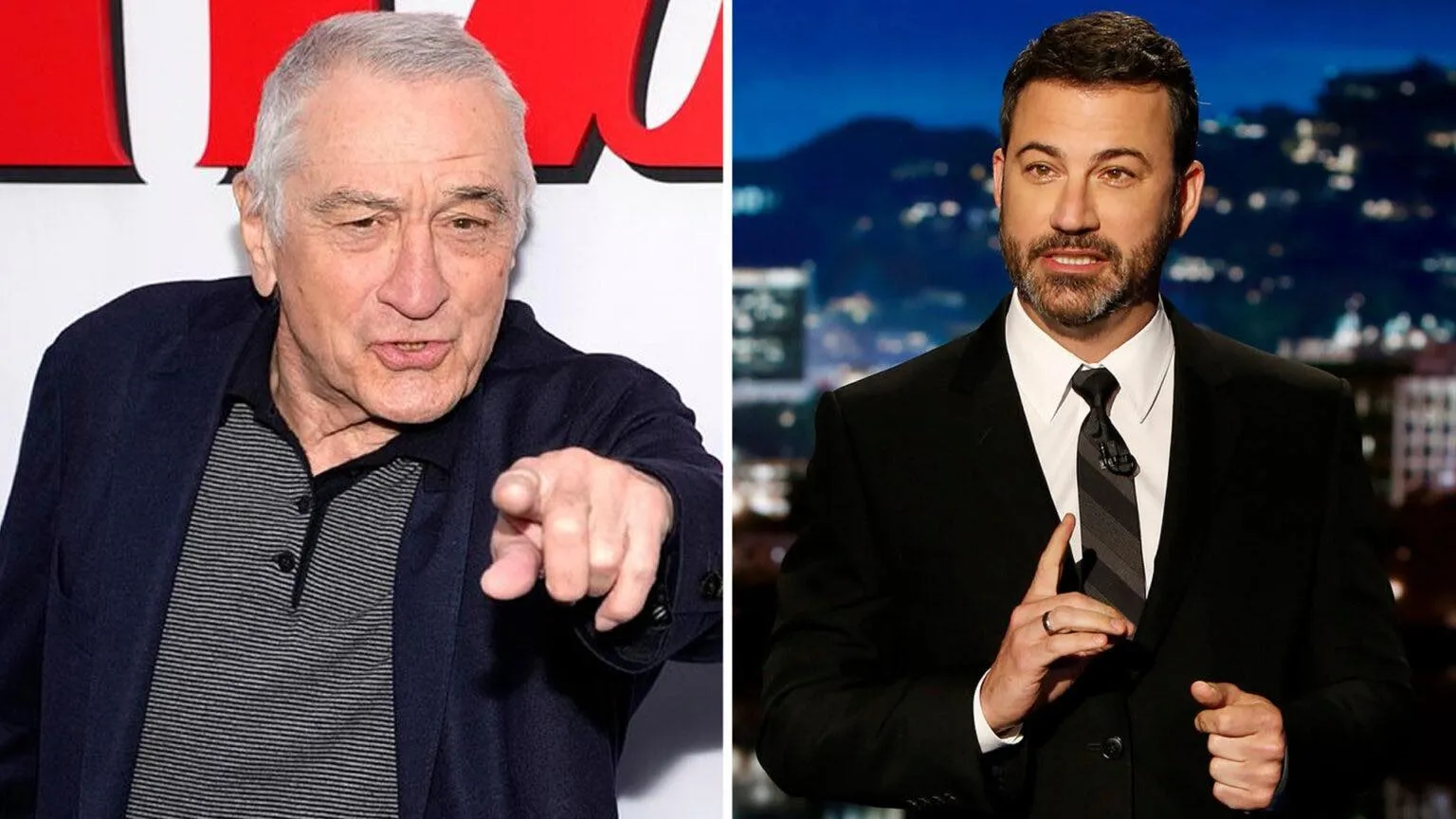Breaking: Jimmy Kimmel Live Receives Lowest TV Rating in History Following Episode With Robert De Niro
In an unexpected turn of events, the iconic late-night talk show “Jimmy Kimmel Live” has received its lowest television ratings in history, following an episode featuring legendary actor Robert De Niro. This surprising development has sparked widespread discussion across the entertainment industry, leaving many to ponder the reasons behind this significant dip in viewership.

The Legacy of Jimmy Kimmel Live
Since its debut in 2003, “Jimmy Kimmel Live” has been a staple of late-night television, known for its witty humor, celebrity interviews, and viral segments. Jimmy Kimmel, the show’s host, has built a reputation as one of the most beloved figures in late-night television, consistently drawing in millions of viewers each night. Over the years, the show has featured a star-studded lineup of guests, from A-list actors and musicians to politicians and cultural icons. Despite the stiff competition in the late-night scene, Kimmel’s show has maintained a strong presence, often ranking among the top-rated programs in its time slot.
Robert De Niro: A Hollywood Legend
Robert De Niro is a name that needs no introduction. With a career spanning over five decades, De Niro is widely regarded as one of the greatest actors of all time. His performances in films like “Taxi Driver,” “Raging Bull,” “The Godfather Part II,” and “Goodfellas” have earned him critical acclaim, numerous awards, and a dedicated fan base. De Niro’s presence on any talk show is typically a major draw for viewers, given his status as a Hollywood legend and his reputation for engaging, candid interviews.
The Unexpected Decline in Ratings
Given the star power of both Jimmy Kimmel and Robert De Niro, it is surprising that the episode in question marked the lowest ratings in the history of “Jimmy Kimmel Live.” Industry analysts and fans alike have been left scratching their heads, trying to understand what could have caused this dramatic drop in viewership.
Several factors may have contributed to this decline. One possibility is the ongoing shift in how audiences consume content. With the rise of streaming platforms and on-demand viewing, traditional television ratings have been steadily declining across the board. Many viewers now prefer to watch clips of their favorite shows on YouTube or catch up on episodes through streaming services, rather than tuning in live.
Another potential factor could be the changing dynamics of late-night television. The landscape has become increasingly crowded, with numerous hosts competing for viewers’ attention. As a result, some episodes of even the most popular shows can get lost in the shuffle, particularly when they air on nights with heavy competition from other networks.
Content and Audience Reception
The content of the episode itself may have also played a role in the low ratings. While Robert De Niro is undoubtedly a major draw, the interview’s content and tone could have affected viewer engagement. If the conversation did not resonate with the audience or failed to capture the expected entertainment value, it might have led to viewers tuning out or switching channels. Additionally, the topics discussed during the interview could have influenced viewer reception, particularly if they touched on divisive or controversial issues.
In recent years, De Niro has been outspoken about his political views, often using public appearances to criticize political figures and discuss social issues. While this candor is appreciated by many, it can also be polarizing, potentially alienating some segments of the audience. It is possible that viewers who were not aligned with De Niro’s views chose to skip the episode or turned it off mid-way.
The Future of Late-Night Television
The record-low ratings for this particular episode of “Jimmy Kimmel Live” highlight the broader challenges facing late-night television in today’s rapidly evolving media landscape. As audiences continue to shift towards digital platforms and streaming services, traditional TV shows must adapt to maintain their relevance and viewership. For late-night hosts like Jimmy Kimmel, this means finding new ways to engage with audiences and deliver content that resonates in an increasingly competitive environment.
Moving forward, “Jimmy Kimmel Live” and other late-night shows may need to experiment with different formats, explore new distribution channels, and even reconsider the types of guests they feature. By staying attuned to the changing preferences of their audience, they can work to prevent further declines in ratings and ensure their continued success.
Conclusion
The recent episode of “Jimmy Kimmel Live” featuring Robert De Niro may have set an unfortunate record with its low ratings, but it also serves as a reminder of the challenges facing traditional television in the digital age. While the exact reasons behind the dip in viewership are still up for debate, one thing is clear: late-night television is at a crossroads. As the industry continues to evolve, shows like “Jimmy Kimmel Live” will need to innovate and adapt to meet the needs of a new generation of viewers. Despite this setback, Jimmy Kimmel remains a beloved figure in late-night TV, and with the right adjustments, his show is likely to regain its footing and continue to entertain audiences for years to come.
